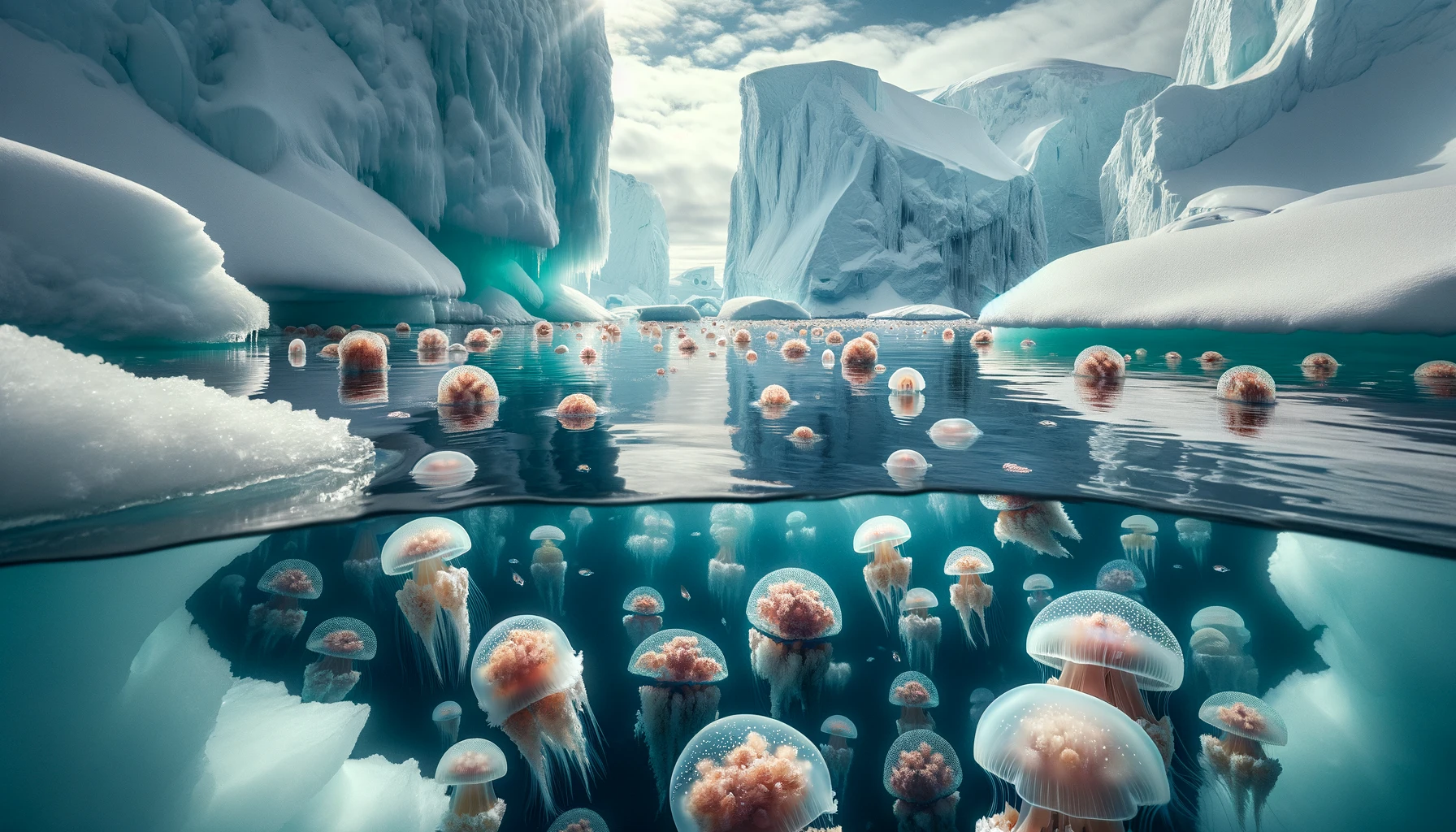The Arctic, a region synonymous with extreme cold and ice, harbors a surprising source of life during its harsh winters. Recent research has unveiled the critical role played by Arctic jellyfish, or “jellies,” in sustaining the Arctic’s complex food web during the winter months. This revelation not only sheds light on the adaptability of life in extreme conditions but also emphasizes the intricate balance within ecosystems facing the challenges of climate change.
The Unseen Lifeline in Icy Waters
Arctic jellies thrive in the frigid waters, providing an essential lifeline to a variety of marine species. During the long, dark winter months, when ice covers the ocean surface and primary productivity is at its lowest, these gelatinous creatures become a crucial food source. Their ability to flourish in such inhospitable conditions underscores the resilience and adaptability of life, offering insights into the functioning of polar ecosystems.
Climate Change and the Arctic Ecosystem
The Arctic is one of the regions most affected by global warming, experiencing rapid changes that have far-reaching implications for its wildlife and ecosystems. As sea ice retreats and temperatures rise, the dynamics within the Arctic food web are shifting. The role of jellies in this changing landscape is becoming increasingly significant, as they adapt to the warming waters and altered ecological conditions.
The Importance of Arctic Jellies
Jellies play a multifaceted role in the Arctic marine ecosystem. They are predators, feeding on small plankton, fish larvae, and even other jelly species, thus influencing the population dynamics of various marine organisms. Simultaneously, they serve as prey to a wider range of species, including sea birds, larger fish, and marine mammals such as the walrus. This dual role makes them pivotal in the transfer of energy within the food web, especially during the nutrient-scarce winter months.
Research and Discoveries
Scientific research into the life of Arctic jellies involves extensive fieldwork, including under-ice diving, remote-operated vehicle (ROV) explorations, and satellite tagging. These studies have revealed fascinating aspects of jelly biology and ecology, such as their reproductive strategies, migration patterns, and survival mechanisms in freezing temperatures. Such research is vital for understanding how Arctic ecosystems function and how they are responding to environmental changes.
Adapting to a Warming World
The adaptability of Arctic jellies to changing conditions offers a glimmer of hope for the resilience of polar ecosystems in the face of climate change. However, it also raises questions about the future balance of these ecosystems. Changes in jelly populations can have cascading effects on the availability of food for other species, potentially altering the structure and function of Arctic marine communities.
Conservation and Future Prospects
Conserving Arctic ecosystems requires a comprehensive understanding of all their components, including the often-overlooked jellies. As the Arctic continues to warm, monitoring the changes in jelly populations and their impacts on the ecosystem will be crucial. This knowledge will inform conservation strategies aimed at preserving the Arctic’s unique biodiversity and maintaining the health of its marine ecosystems.
Arctic jellies illuminates the remarkable adaptability
The study of Arctic jellies illuminates the remarkable adaptability of life in one of the planet’s most extreme environments. As indicators of ecological change, jellies provide valuable insights into the impacts of climate change on Arctic ecosystems. Their role as a winter food source highlights the complex interdependencies that sustain life in the Arctic, reminding us of the resilience of nature and the importance of protecting these vulnerable ecosystems for future generations.



